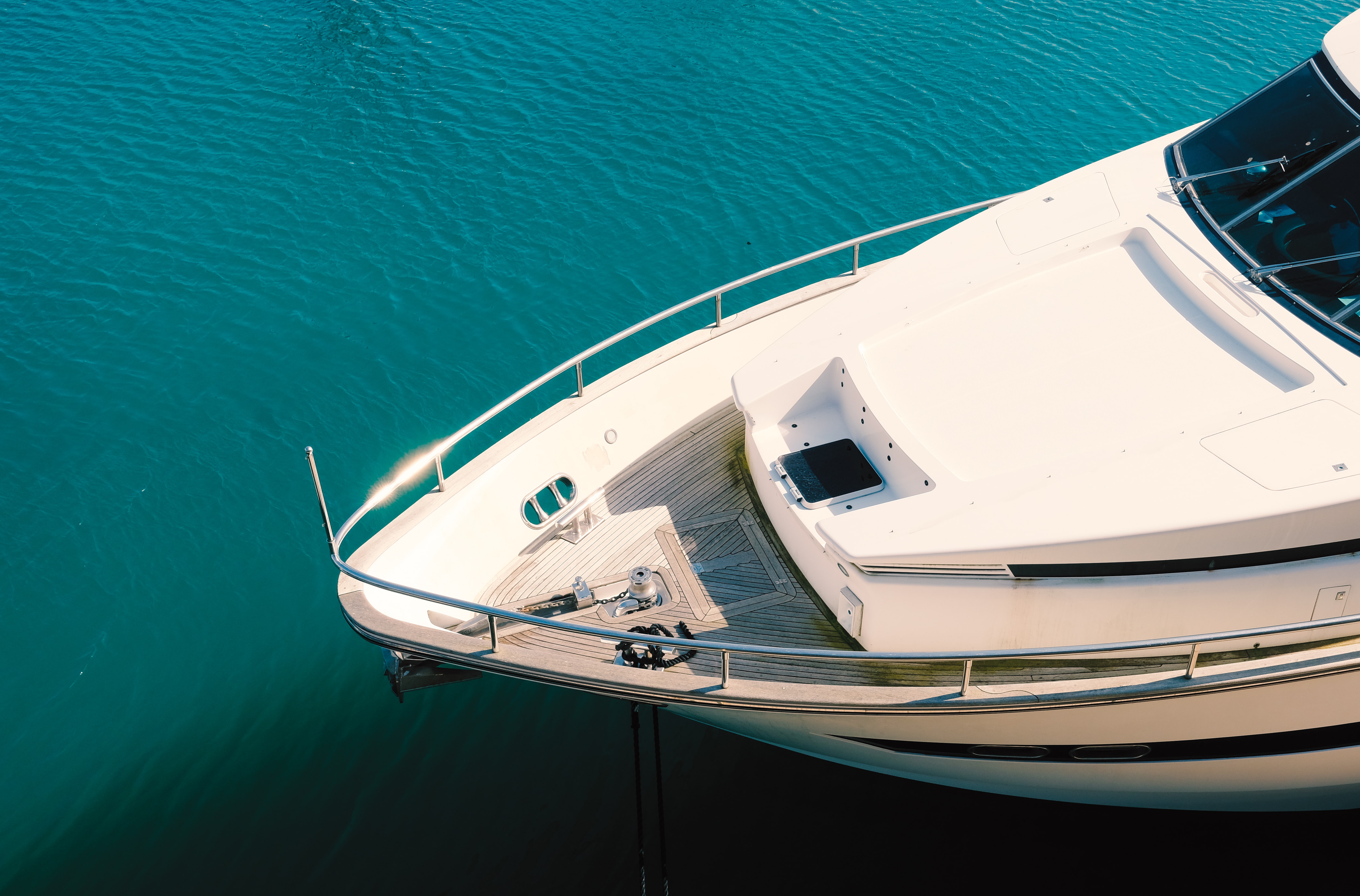Like most boaters, you’re probably counting down the days until the start of the season. Before sailing into the sunset, ensure your boat is in tip-top shape with our 2022 Spring Commissioning Checklist.
Spring Commissioning: Pre-Launch Checklist
- Inspect and replace hose clamps as necessary. Clamp fuel lines and exhaust hoses with marine-rated stainless steel hose clamps. While not technically required, double clamp whenever possible, especially for connections below or near the waterline.
- Inspect and lubricate seacocks.
- Inspect all hoses for stiffness, leaks, cracking, and rot. Replace any that are faulty. Make sure they are tightly fit.
- Inspect prop(s) for pitting, dings, and distortion. For inboard drive systems, grip the prop and try moving the shaft. If it’s loose, the cutless bearing may need to be replaced.
- Examine the rudderstock and make sure it hasn’t been bent. Ensure the steering works correctly by operating the wheel or tiller.
- Inspect the hull for blisters, distortions, and cracks.
- Make sure your engine intake sea strainer is free of corrosion and properly secured.
- For inboards, check the engine shaft and rudder stuffing boxes. The stuffing box should leak no more than two drops per minute when the prop shaft is turning.
- Inspect and lubricate seacocks.
- Look for deck leaks at ports and hatches. Renew caulk or gaskets as necessary.
- Test the bilge pump and float switch to ensure proper operation.
- Inspect dock lines and anchor lines for chafe and wear.
- Ensure that the stern drain plug is installed (if equipped).
» MORE: How To Prepare Your Boat for Spring
Engines and Fuel Systems
- Inspect fuel lines and all hoses for cracking or brittleness. Check joints for leaks. All lines should be well supported with non-combustible straps or clips.
- Inspect fuel tanks, fuel pumps, and filters for leaks. Portable tanks and lines should be completely drained of old fuel before filling with fresh fuel. Clean or replace fuel filters and/or fuel-water separators if this wasn’t done during winterization.
- Inspect the bilge blower hose for leaks and run the blower to confirm that it’s working properly, free of debris, and venting as expected.
- For inboard-powered and inboard/outboard boats, inspect exhaust manifolds for corrosion and remove them every few years.
- Clean and tighten electrical connections, especially the ends of battery cables.
- Charge battery.
Engine Outdrives and Outboards
- Examine rubber outdrive bellows for cracks or deterioration and replace if needed.
- Check power steering and power trim oil levels.
- Replace anodes and zincs as necessary.
- Inspect control cables outer jacket for any cracks or swelling. If corroded, the cable must be replaced.
- Inspect lower unit oil level.
Lines and Rigging
- Check lines for quantity, ensuring there are enough for all docking and towing situations, and inspect their condition. If lines are worn or frayed, replace them.
- Inspect cleats for signs of looseness. Check for loose backing plate and cracks/breaks in the mating surface.
- Inspect rigging (standing and running) and ensure that it’s in good order. Check all fitment and operational components.
Boat Trailers
- Check tire treads and sidewalls for cracks or lack of tread. Replace as necessary. Check air pressure, including the spare.
- Examine wheel bearings and repack as necessary.
- Inspect brakes and brake fluid reservoir.
- Test all lights and replace them as necessary.
- Inspect winch and hitch chains.
- Inspect trailer frame for rust and deterioration.
Documents and Local Laws
- Check boat registration expiration date and renew as necessary.
- Check for new and existing boating regulations. Jurisdictions may place additional education and licensing requirements for operators of watercraft.
- Review your boat insurance policy and manage coverage as needed. SkiSafe offers free boat insurance quotes and various coverage options.
» MORE: How to Get a Free Boat Insurance Quote
Safety Equipment and Gear
- Check expiration dates on flares and ensure they are not expired or compromised. Look for any sign of damage or deterioration that will impact performance.
- Inspect fire extinguishers and ensure all on board are of the appropriate class. Check expiration dates and charge as necessary. Perform a physical inspection and look for any bulges, rust, or dents that can compromise performance. Dispose (within local ordinance) and replace as necessary.
- Ensure you have properly sized and wearable life jackets that are in good condition. Check inflatable life jacket cylinders and dissolvable “pill” bobbins in auto-inflating models. If any appear worn, torn, and not fit for use, replace them. If you have kids on board, ensure the equipment fits properly.
- Test smoke, carbon monoxide, fume, and bilge alarms. Check their batteries and functionality. Replace equipment that is not up to par.
- Check running lights for operation and spare bulb inventory.
- Update paper charts and chartplotter software as necessary.
- Replenish first-aid kit items as necessary.
- Ensure proper operation of VHF radio(s).

